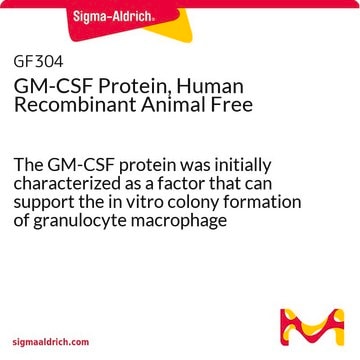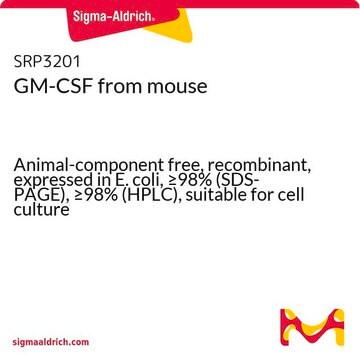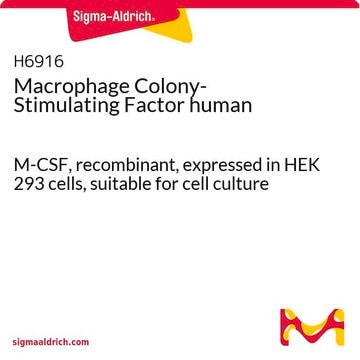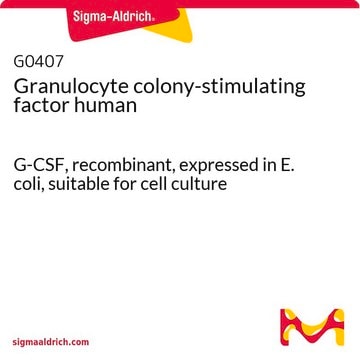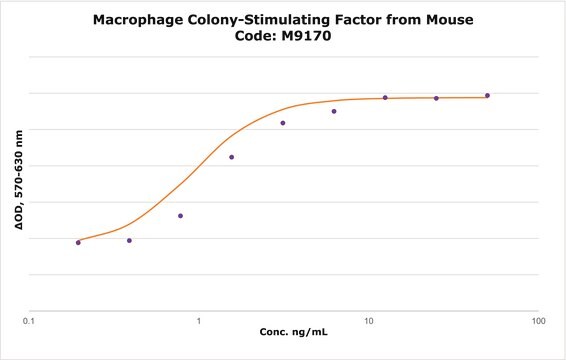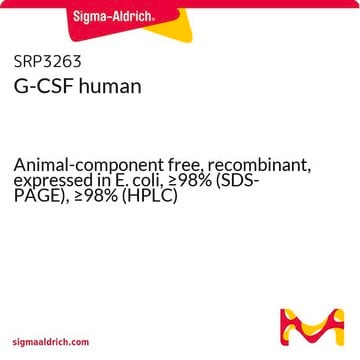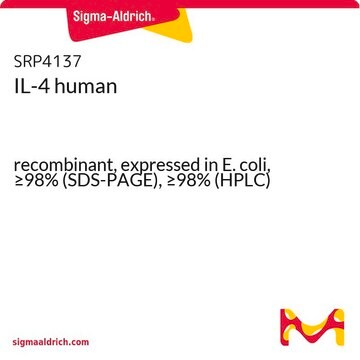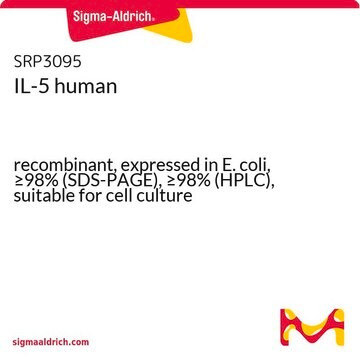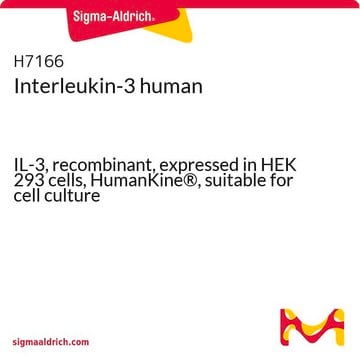G5035
Granulocyte-Macrophage Colony-Stimulating Factor human
GM-CSF, recombinant, expressed in E. coli, suitable for cell culture
Sinonimo/i:
GM-CSF human
About This Item
Prodotti consigliati
Origine biologica
human
Livello qualitativo
Ricombinante
expressed in E. coli
Saggio
≥98% (SDS-PAGE)
Forma fisica
lyophilized powder
Potenza
≤0.1 ng/mL EC50
PM
14.6 kDa
Confezionamento
pkg of 4X5 μg
pkg of 5 μg
Condizioni di stoccaggio
avoid repeated freeze/thaw cycles
tecniche
cell culture | mammalian: suitable
Impurezze
≤1.000 EU/μg
Colore
white
Solubilità
water: soluble 0.010 mL, clear, colorless
N° accesso UniProt
Temperatura di conservazione
−20°C
Informazioni sul gene
human ... CSF2(1437) , CSF2(1437)
Cerchi prodotti simili? Visita Guida al confronto tra prodotti
Descrizione generale
Azioni biochim/fisiol
Stato fisico
Risultati analitici
Codice della classe di stoccaggio
11 - Combustible Solids
Classe di pericolosità dell'acqua (WGK)
WGK 3
Punto d’infiammabilità (°F)
Not applicable
Punto d’infiammabilità (°C)
Not applicable
Dispositivi di protezione individuale
Eyeshields, Gloves, type N95 (US)
Certificati d'analisi (COA)
Cerca il Certificati d'analisi (COA) digitando il numero di lotto/batch corrispondente. I numeri di lotto o di batch sono stampati sull'etichetta dei prodotti dopo la parola ‘Lotto’ o ‘Batch’.
Possiedi già questo prodotto?
I documenti relativi ai prodotti acquistati recentemente sono disponibili nell’Archivio dei documenti.
I clienti hanno visto anche
Articoli
Read article on hematopoietic cytokines and hematopoiesis
Il team dei nostri ricercatori vanta grande esperienza in tutte le aree della ricerca quali Life Science, scienza dei materiali, sintesi chimica, cromatografia, discipline analitiche, ecc..
Contatta l'Assistenza Tecnica.